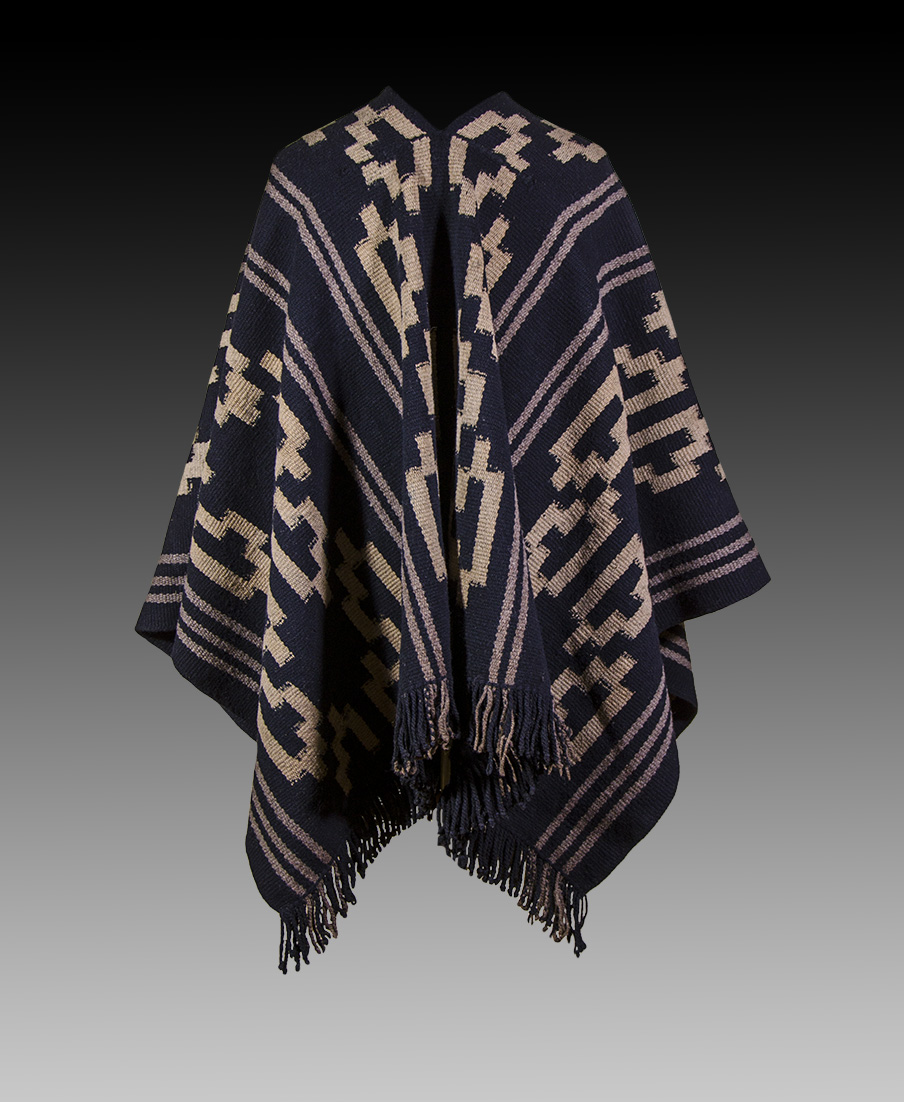BACK TO TOP
TEXTILES
Pampas poncho. Argentina or Chile. First half of the 20th century.
Woven in a cloth, with three lanes of "tied guard", contained by lists. The entire garment was warp-woven on the vertical Mapuche loom and presents structural, twisted and knotted fringes.
For the preparation of the streets with geometric motifs, the “tying” is used, which the weaver executes when the warp has traveled both crossbars of the post loom and is already prepared; At that moment -guided by the design she intends to achieve in the finished poncho- she generates all the "reserves" she deems necessary and only then, she removes it from the loom and dyes the wool inside a tray, separating the lanes from the lists. Once the color she is looking for is achieved, she places it back on the pitchfork loom and begins her weaving work, gradually untying each tie as the garment is made into a single cloth. Measurements: 147 cm (plus fringes, 8 cm per side) x 139 cm.
In the Mapuche culture, the poncho has a special hierarchy that is consistent with its owner. The weaver made it knowing who would be its recipient. In the field of Pámpida and Mapuche textiles, a vertical loom -witral in its original language- was used (and is still used today), formed by a kind of arch, with two posts and two crossbars. With the opening of the studs, the weaver determined the width of the garment, thus achieving the rudimentary benefit of being able to make the fabric in a single cloth.
Are you interested in selling some works?
Send us an email briefly indicating
which works you intend to put on sale, and we will respond. click here
Subscribe to our newsletter to be updated.
Check our Newsletters